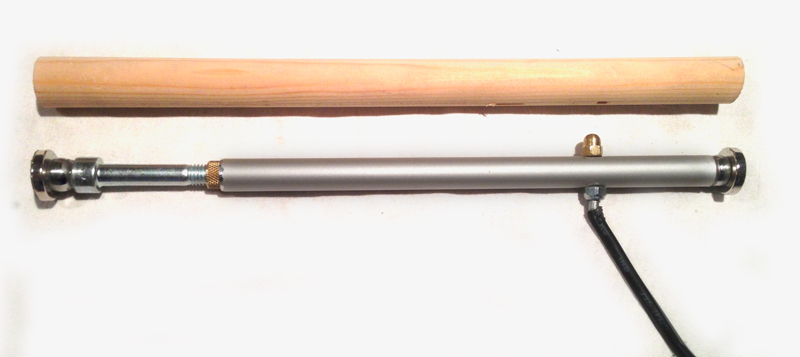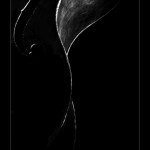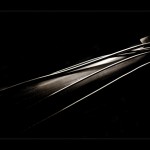On Wednesday (March, 12), the Musikmesse Frankfurt starts. I’ll be exhibiting at Hall 3.1, where all the acoustic guitar and violin making companies are located, at booth H27. Hope to see you there!
Category Archives: Bass Making
16th annual spring seminar for violinmakers
The 16th annual spring seminar for violinmakers will take place on May 3rd at Notts, UK.
It is attended by about 180 people from all over the UK comprising students, professional and amateur makers. Its a great day to meet up with people in the ‘trade’ and make new contacts, as well as being a lot of fun. You can listen to interesting lectures, have a wonderful lunch and shop at the many trade stands selling everything for the violinmaker.
How to calculate a C-extension length
Fingerboard extensions are very common in the USA, but become more and more popular in Europe, too. They have a couple of advantages over a 5-string bass, can get fitted to any 4-string bass and if they are well made, it’s reversible.
My friend Giorgio Pianzola, bass maker from Bern/Switzerland, has published a comprehensive guide how to calculate the length of an extension very exactly.
Visit www.kontrabassblog.ch for further reading (it starts in German – scroll down for English translation).
Soundpost measurement tool with magnets
If you need a new Soundpost for a double bass, you usually take the already existing Soundpost for reference, and make the new one slightly longer or shorter, whatever you need in particular. While the proper length is not that difficult to measure inside the bass, the correct angle of the Soundpost’s bottom and top flat sides are always hard to guess, and a matter of time consuming trial and error. Of course, you can get the angle from the outside of the top and the back, but it’s difficult to find the exact position and the plates themselves aren’t always parallel, so the outsides only give you a rough idea of the angles.
I had some time during the Christmas holidays, so I’ve built my own measuring tool which will hopefully save me some time in future. The shaft is a aluminum tube of 10 mm diameter. On one end, I glued on a steel ball with epoxy. On the other side, I inserted a brass thread and a screw (M8) for length adjustment, again with a steel ball glued on.
Then, I put magnet rings on both steel balls. The power of magnetism holds them firmly on the balls, but will allow the to follow the curvature and angle of back and top smoothly – that’s the key idea of this device. With some sandpaper, I’ve dulled the balls’ surface, in order to prevent the magnets from moving too easily. I now set the device to the guessed length of the upcoming soundpost, set it into position inside the bass and re-adjust the length if needed. The magnets are much slippier than soundpost wood is, so I glued on fine sandpaper. Once the device has the proper length at the correct position, I remove the device carefully (so that the magnets stay in their position). For inserting and extracting the device, I use a fixed bent wire instead of the S-shaped soundpost setter tool – but this still needs some improvement. Besides this, it’s pretty cool. Transfering the angles to the soundpost is still a little tricky, but much better than guesswork.
Scordatura Pedals for the Double Bass: a project at Kickstarter
Double Bassist Carter Callison likes to work with different tunings on the double bass. He has developed a Double Bass Retuning Pedal, which allows him to change the tuning of his bass while he plays:
Double Bass Retuning Pedals (a.k.a. “Scordatura Pedals”) have gone from being a simple DIY project in my garage to becoming a key element in my PhD research. After my original handmade prototype showed potential, I began the tedious process of developing CAD drawings with a design company in South Carolina in order to transform my basic idea into a nuanced product that can handle vigorous professional use. Now that the CAD drawings are done, I am at a critical stage where a lack of funds has put a hold on what I believe is an important project for the development of the double bass. The funds that I am requesting will allow for the manufacture of a professional quality prototype which will allow me to continue my research at the Royal Academy of Music.
Double Bass photography and books
Pim van der Zwaan is a dutch double bassist and photographer who extensively works with the double bass. At his website and Flickr, he shows some of his photos which mostly have been taken at the workshop of luthier Harry Jansen. Some of his photos are available as a book: “The Art of double bass making“.
Harry and Pim are currently are working on a new book about the old school of English doublebass making , with photos of basses from John Lott, Panormo, Fendt and other amazing basses.
Franz Moser’s new version bridge adjusters
At the Frankfurt Musikmesse, Franz Moser has launched his new version of his MPM bridge height adjuster screws. Like the old version, a ball bearing joint allows the bridge feet to follow the top’s movement. The new version screws now have a thicker thread diameter (M8), and the bearing is deep inside the bridge feet – the holes’ walls prevent the bridge from tilting too far.
Violin Society of America/Oberlin Bass Workshop
At the Oberlin Conservatory of Music, June 10–16
This year’s faculty includes David Gage, Arnold Schnitzer, and Jay VandeKopple. Some experience is preferred, and a passion for the string bass is a must. Learn from luthiers with years of experience making, repairing, and thinking about basses. Bring tools and get ready to work! For more information and faculty bios, click here
The Octobass
At the bowmaker’s workshop
This video shows Jean-Jacques Augagneur from Lyon (France) making a violin bow. From wood selection, carving, hairing and final adjustments, Augagneur shows and explains all steps of bow making.
[youtube=http://www.youtube.com/watch?v=pKxORtebqYU&w=500]








